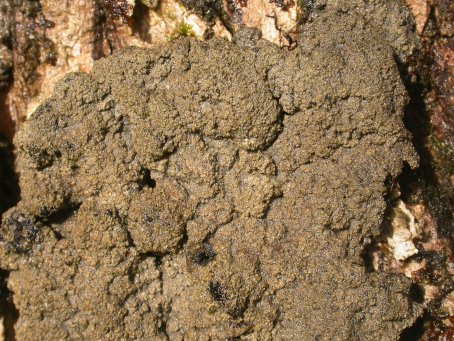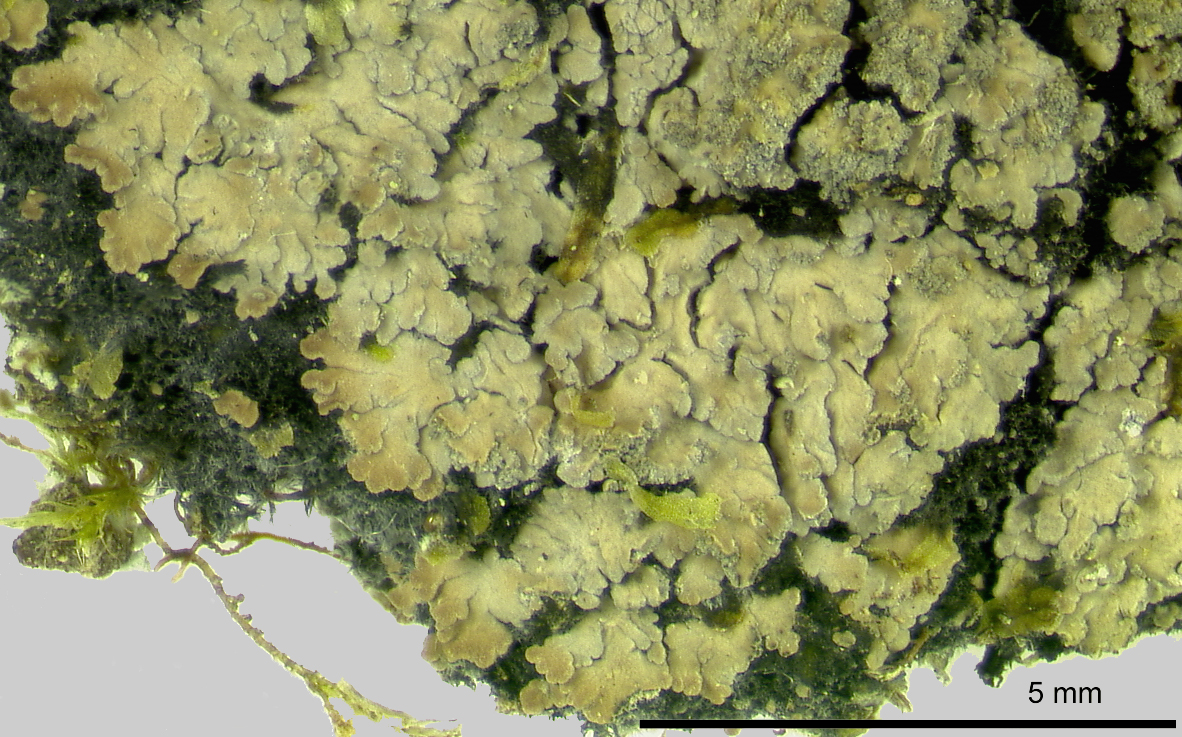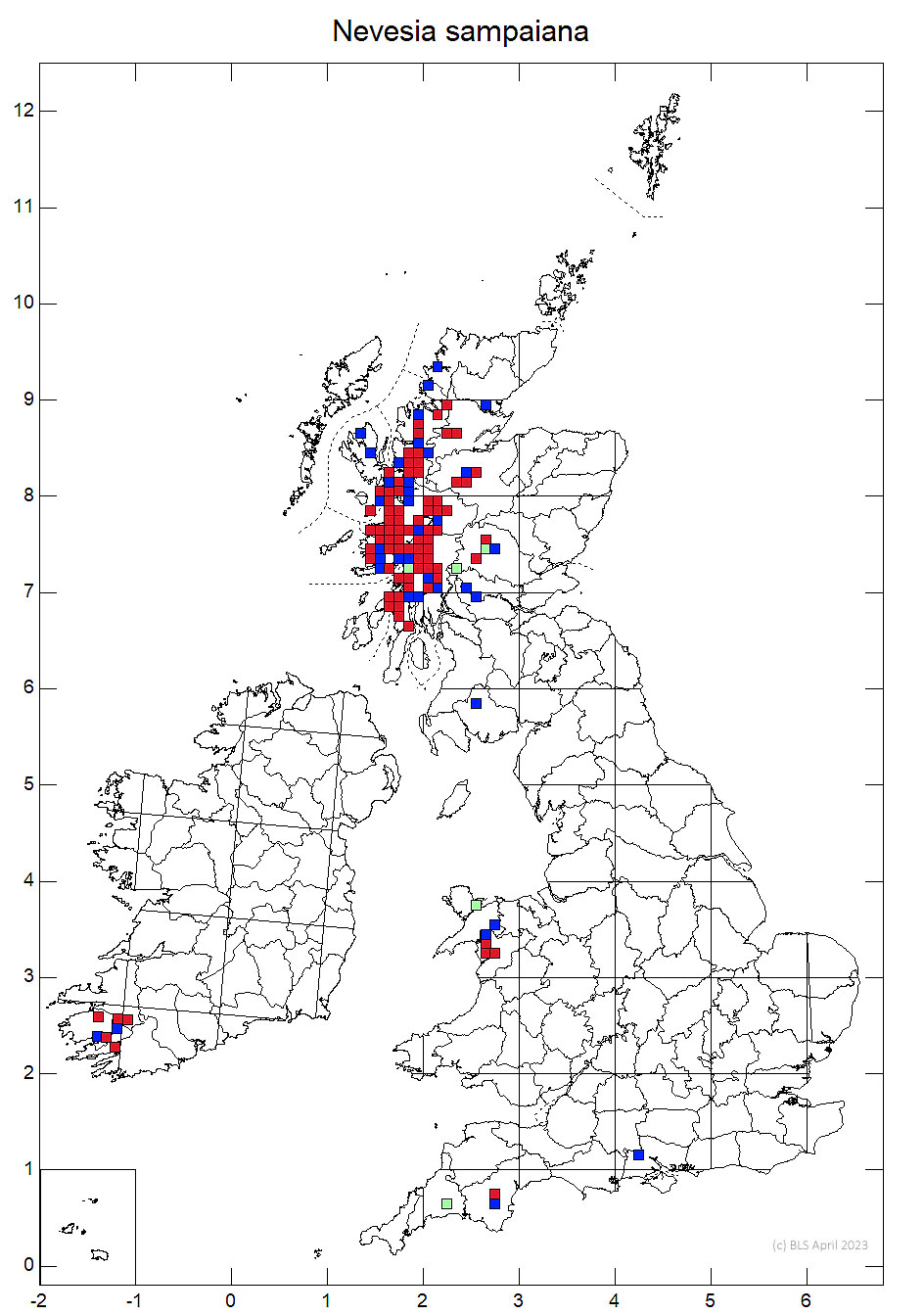Pannaria sampaiana
This species has all the hallmarks of a member of the cyanobacteria-containing Pannariaceae in the shape of a usually well-developed blue-black edge (the hypothallus) to each colony. The central area consists of a pavement of cracked pale chestnut brown squamules so closely appressed as to suggest you are looking at a crustose not a squamulose lichen.

Photo: Ray Woods
Around the paler margins of each squamule coarsely granular cream-coloured soralia form. These can extend over most of the squamule surface. When covered in soralia this species can look like Parmeliella testacea. When fresh and moist this latter species can be easily detected by its strong antiseptic smell. Its soralia are also more blue-grey in colour, its marginal lobes more elongate and its hypothallus less well developed. (RGW)

Photo: Alan Orange
On basic bark of trees such as ash, hazel and elm in oceanic areas, little affected by atmospheric pollutants. Whilst most frequently found in woodland, it also occurs on large well-lit wayside trees.
Very rare in Wales and we know little of the detailed distribution and population sizes of this species here. There are a scatter of localities in the Snowdonia National Park. Pentecost (1987) records it from old oaks in SH63, 72 and 75. Rose & Coppins (1999) note it from SH64, 65, 72 and 75. There are localised records from pasture woodland trees at Nannau and streamside ashwood at Dolmellynlyn near Dolgellau where it is associated with a range of other lichens of limited distribution.
In England it was recently known only from the New Forest (1971) but was gone by 1991 (Rose & Coppins(1999)) and from a single tree in Devon where it was last seen in 1975 (Benfield (2001). It is a scarce species in the Central Highlands and Southern Uplands of Scotland but becomes more frequent in woodlands of the sheltered glens of the Western Highlands. It is also found in SW Ireland and elsewhere in the world it is known from the western Atlantic from Norway to Portugal and at altitude around the Mediterranean and in NW Africa. (RGW)
It is threatened by acidic atmospheric pollutants, the loss of host trees by felling and natural collapse and a lack of nearby suitable host trees onto which to expand. The complete cessation of grazing in some sites may lead to its loss through being shaded out by dense evergreens such as ivy, holly and rhododendron. It is accorded a threat status of vulnerable in Wales and near threatened in Britain. British populations are considered to be of international importance. (RGW)
Benfield, B (2001). The Lichen Flora of Devon. Privately published.
Pentecost, A (1987). The lichen flora of Gwynydd. Lichenologist 19:1-166.
Rose, F and Coppins, BJ (1999).Pannaria sampaiana. Species account 981/1999 in the Lichen Atlas of the British Isles. British Lichen Society, London.
- Log in to post comments

